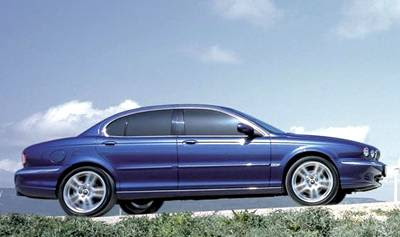Jaguar XJ
There are still plenty of people who get that warm fuzzy feeling when they see an old Jag.
The brand is entwined in our national psyche with its raffish wood ’n’ leather, pipe smoking, sports jacket wearing, Britishness. Of course, all that means nothing whatsoever to luxury car buyers in the US, Europe and beyond, buyers whose purchase decisions make or break Jaguar as a credible global car maker. The famous marque was hamstrung by its own history for too long but today there’s a newfound confidence and a forward-looking agenda. Nothing illustrates this more dramatically than the latest XJ.
The XK sports coupe and the XF executive saloon were breakthrough cars for Jaguar. They married all that heritage to a more overtly modern approach. The XJ shows Jaguar spreading its wings further with a luxury saloon to challenge the sector’s leading lights. It’s a firm break from the big Jag tradition that was originated in 1968 by the original XJ. Through at least five generations of Jaguar’s flagship, the styling evolved at an arthritic snail’s pace. It reached the point where the last model, one of the most advanced luxury cars on sale at the time of its launch, looked ostensibly the same as the rusting relics that could be picked up for peanuts at any second hand car dealership. Jaguar wasn’t communicating its dynamism and relevance, but it is now.
Like its predecessor, the XJ uses all-aluminium construction which sees it tip the scales substantially lighter than steel rivals like the BMW 7 Series and Mercedes S-Class. As long as buyers don’t go wild on the options list, it should even come in weighing less than the substantially smaller Jaguar XF. This leads to major advantages in the performance, handling and efficiency departments where an important part of the luxury car battle is fought. The engines have been seen before in the XF, so we know that they’re largely outstanding. There are normally aspirated and supercharged versions of the Jaguar 5.0-litre V8, with 380bhp and 464bhp respectively. Plus Jaguar is also offering an XJ Supersport model with the supercharged engine upgraded to 503bhp. The diesel will inevitably be popular and it’s a 3.0-litre twin-turbo V6 that yields 271bhp, with a massive 600Nm of torque thanks to its variable geometry turbos.
"Today’s XJ retains traces of what’s always made a Jaguar a Jaguar but it’s also bold and ferociously modern"
The fully independent suspension is similar to that in the XF but drivers have the option of choosing standard, Dynamic or Winter settings via the JaguarDrive rotary knob that takes the place of a conventional gear lever. These modes adjust the suspension, throttle response, gearshift speeds, stability control settings and the active differential to produce the desired results. The gearbox itself is an electronically-controlled six-speed auto complete with wheel-mounted paddle shifters which sends drive to the rear wheels on all XJ models. Jaguar is intent on this XJ being seen as a real driver’s car.
The sinewy lines of the XJ only serve to emphasise its sporting intent. The front end borrows heavily from the XF, the sharply contoured bonnet and the wire mesh grille that juts forward from the plain of the headlights giving it real presence. The car is available in standard or long wheelbase forms, with the longer car gaining 125mm and somehow managing to look even sleeker in profile. The real drama is at the rear, however, where Jaguar has gone for an elegant but bold treatment. The C-pillars are blacked out to look like an extension of the rear screen and the tail lights arch up around the rear haunches into the line of the boot lid. The fins of light within the clusters are meant to resemble a jaguar’s claws.





.jpg)